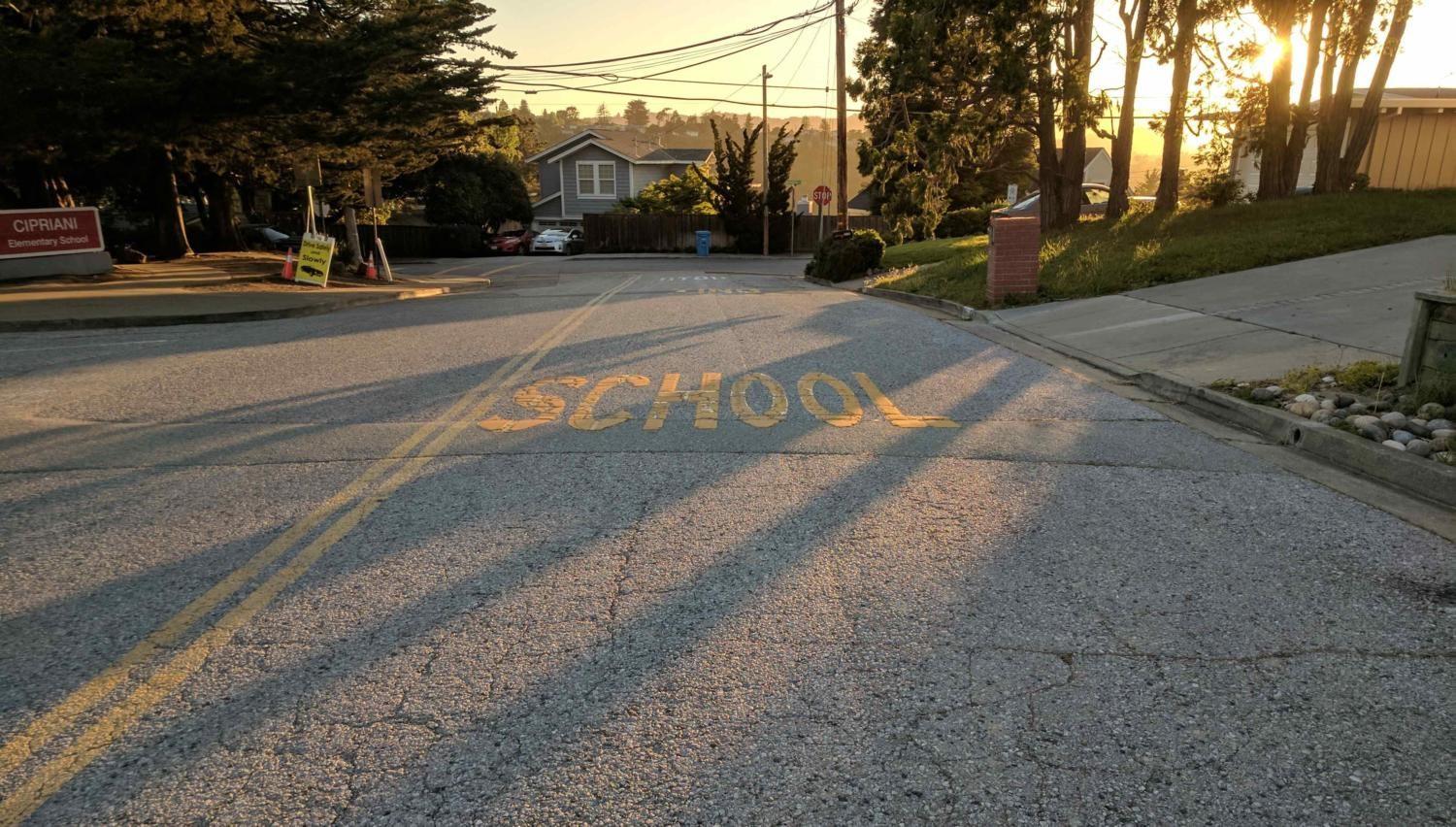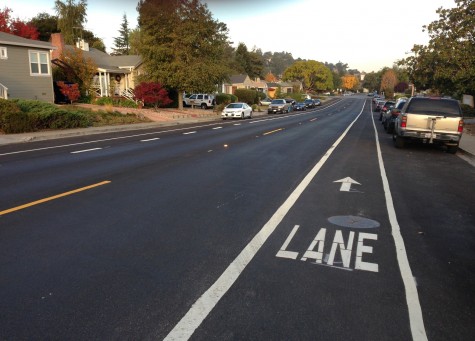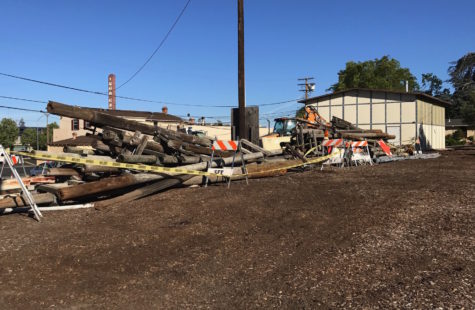Belmont’s roads are among the worst in the state.
According to a staff report from the Department of Public Works, Belmont has accumulated upwards of $100 million in deferred road and storm drain maintenance. On the Pavement Condition Index (PCI), an algorithm which scores road quality on a one to 100 scale, Belmont scores a 52, earning it a spot in the bottom 8 percent of cities in the Bay Area.
According to Belmont Mayor Charles Stone, several obstacles have stood in the way of adequate infrastructure maintenance.
“Belmont has a long history of being economically underdeveloped with less diverse and robust revenue streams than some other cities,” said Stone. “That coupled with diminished state and federal money for infrastructure put past councils in a tricky spot.”
That lack of funding has hit Belmont’s critical infrastructure hard. Among the roads worst affected is the first block of Buena Vista Avenue, which was paved alongside Cipriani Elementary School in 1956. Within that 62-year span, its PCI grade has plummeted to a “failed” score of 13, meaning the entirety of the affected portion must be excavated and replaced.
So, when several roads in Cipriani and surrounding neighborhoods were resurfaced in 2013, Buena Vista was not among them.
“The cost of the reconstruction is over $1 million,” said city engineer Leticia Alvarez. “There was not a decision to exclude Buena Vista. There were simply not enough funds to begin with.”
Belmont’s storm drain system has also been neglected. The antiquated network of “deficient” corrugated metal, concrete, and polyethylene pipes has become a whack-a-mole of sorts for the city, with the limited funding allocated in the public works budget mostly spent towards emergency repairs.
According to the Public Works Department in an April staff report, “there is no dedicated funding source for the stormwater capital improvements program, and no reliable funding for the program has ever been secured.”
No singular cause is responsible for depriving city coffers of infrastructure funds. According to Belmont Finance Director Thomas Fil, outdated tax systems and state revenue sources are partially to blame.
“The typical funding source for streets and roads is paid for, in large part, by what happens at the pump,” said Fil. “The model was based on consumption improving: as consumption would rise over time, so would gas taxes.”
However, the county-wide flat gas tax passed with Measure A in 1988 did not anticipate rising fuel prices and the popularity of high-mileage vehicles. Such vehicles are an important factor in a place like California where rebates incentivize the purchase of low-emissions and electric cars. As of 2016, a full 18% of all vehicles sold in the state were electric, according to Clean Technica. As such, revenue from gas tax began to severely undercut predictions, forcing cities into a cycle of unavailable revenue.
“It’s not a unique problem to Belmont,” said Fil. “It’s just reflective of what’s happening nationally and statewide.”
However, while decaying infrastructure remains a talking point of campaigns across the country, the problem is acute in Belmont. Lacking dependable and diverse revenue streams or a developed business sector, the streets and roads budget has been without sufficient funding for decades, according to the city website. A person driving to any of Belmont’s residential neighborhoods will encounter several streets in need of repair, with 30 percent of roads in Belmont in unserviceable condition according to the PCI index.
A few of the best and worst roads in Belmont. All data taken from the Public Works Department. PCI scores are graded on a scale of one to 100.
That isn’t to say some of the blame shouldn’t be placed on city officials. According to Stone, past periods of economic growth presented several ignored opportunities.
“During the boom times of the late 90s and early 2000s, councils could have done exactly what we did: engage the community and place a revenue generating measure on the ballot to help stop the bleeding,” said Stone. “I think things could have been done better, and it would have resulted in a huge savings if action could have been taken years ago.”
But for the first time in decades, there could be light at the end of the tunnel.
After a lengthy and contentious local campaign, Measure I, a half-cent sales tax that appeared on the November 2016 ballot, passed by a margin of 55 to 44 percent. Like any campaign, it was not without its controversy.
To circumvent the requirement imposed by Proposition 13 that all tax measures be passed by two-thirds popular majority, Measure I does not designate a specific destination for its revenue, instead allocating it toward “any legitimate city purpose.” With the controversy provoked by this aspect of the measure, attitudes about city infrastructure previously left to simmer suddenly came to a boil.
Former Mayor Pam Rianda, who presided over the council in 1994 and 1998 and remains one of the more controversial political figures of Belmont’s history, wrote in a San Mateo Daily Journal op-ed, “Belmont voters are keenly aware of our degraded pavement system, along with sewer and storm drainage maintenance woes. But, we will not be fooled into thinking there is no funding to solve these problems. Just look at our $9 million (and growing) reserve and future increase in city revenue.”
That $9 million statistic represents Belmont’s general reserve fund, which constitutes upwards of 33 percent of the city’s general revenue in fiscal year 2018 according to city budgets. Many such funds were created at the insistence of the state in the aftermath of the 2008 financial crash in an effort to mitigate future crises. According to Stone, dipping into the reserve fund would be inadvisable.
“As Governor Brown has pointed out, a robust ‘rainy day’ fund is beyond prudent; it really is a necessity. I agree,” said Stone. “We’ve had the luxury of living in a very prosperous economy for the last six or so years. That isn’t going to continue forever and when the inevitable downturn occurs, we’re going to need that reserve.”
Still, some are opposed to Measure I and the way the city has addressed its infrastructure issue. For example, the StopMeasureI.org campaign’s official statement on the issue reads, “Belmont officials have doggedly pursued a campaign to exaggerate the City’s infrastructure problems and understate the City’s financial resources, to panic residents into voting for new taxes as the only solution.”
However, when residential streets like Sunnyslope Avenue deteriorate to the level of gravel roads, other residents argue there is little to exaggerate.
“When my family moved here, I learned quickly that a full coffee mug meant walking around with coffee stains on my outfit all day,” wrote Belmont resident Kelly Huffman in a pro-Measure I op-ed in the Daily Journal. “For those of us who drive them on a daily basis, it’s no shock that Belmont’s roads are consistently ranked at the bottom of all roads in our county.”
Ultimately, frustrations with the state of Belmont’s streets and storm drains prevailed over those skeptical of its provisions, and Measure I was passed. This, combined with several new projects approved by the council that are currently in development, should greatly enhance the depth and flexibility of the city’s infrastructure budget, according to Stone.
“Over the next year, revenue from Crystal Springs Uplands School, two new hotels, and the electronic sign near Highway 101 will begin flowing into the general fund,” said Stone. “I believe we should use a substantial portion of this revenue for infrastructure work.”
However, Belmont isn’t out of the woods just yet. Even with the state legislature’s passage of a steeper gas tax that is projected to generate $6.7 million in streets and roads funding for the city, the $100 million cost of the deferred maintenance problems means that even in the most aggressive spending scenarios, the city’s overall PCI score is expected to increase only marginally, according to the staff report.
Even so, that’s better than what Belmont’s roads would be without Measure I funding. According to the staff report, by 2023, the city’s PCI score under past spending conditions would deteriorate from a 52 to just 41. By 2048, that figure would drop as low as nine.
This reality has made the council eager to investigate vigorous spending policies.
“I think I heard a few other council members make statements on the dais that led me to believe there is support on the council for exploring other investments,” said Stone. “I look forward to learning more about what investment would be required to improve our overall Pavement Condition Index rather than declining or just holding steady.”
And even as the future remains somewhat uncertain, members of the council are eager to cement their legacy as protectors of Belmont’s infrastructure.
“We’re asking you to take us at our word: that we’re going to put this money towards roads and storm drains,” said Stone at an April 25 council meeting. “I want to live up to that promise.”















